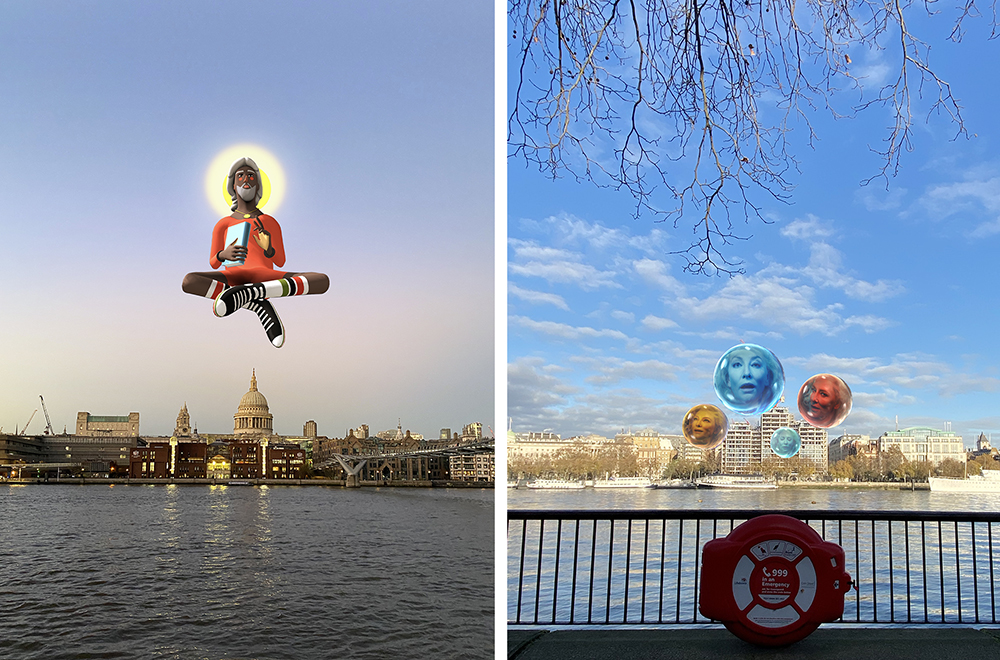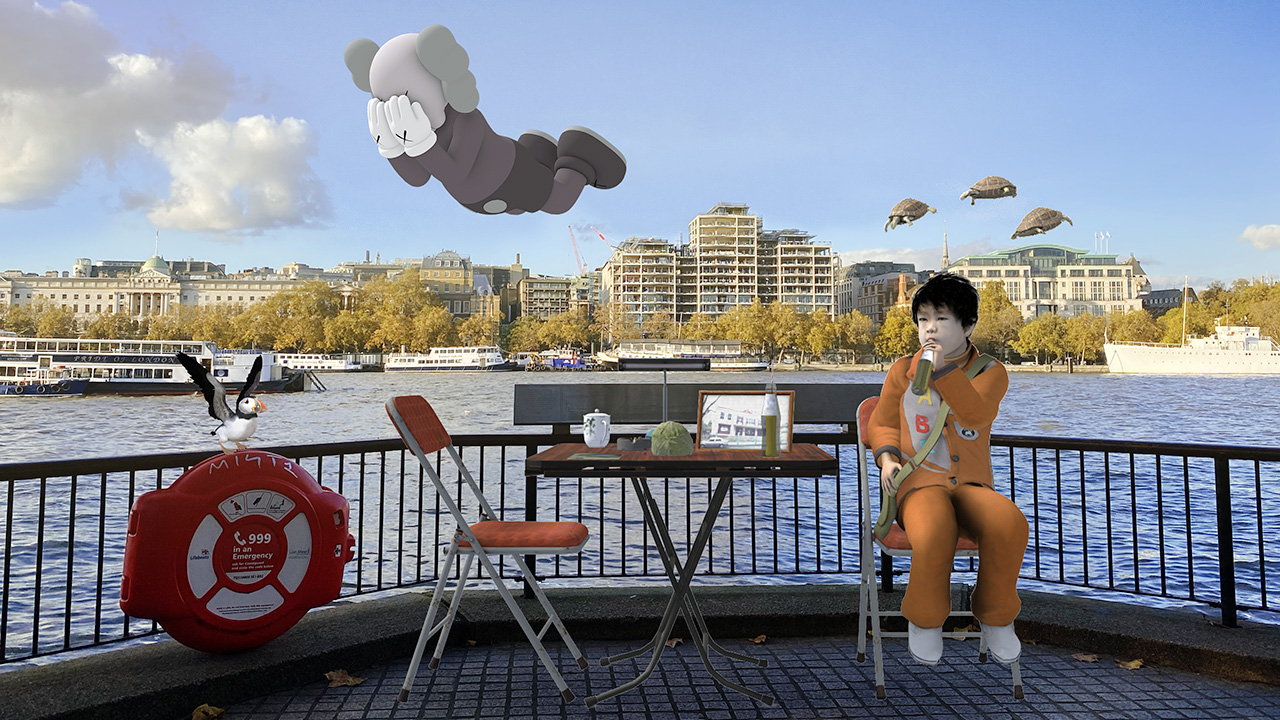“The virtual and real worlds are coming closer and closer together,” says Jefferson Hack, co-founder of Dazed Media, in conversation with Jing Culture and Commerce. “What’s interesting will be how humanizing and emotional creatives can make virtual experiences such as augmented reality.”
Augmented reality (AR) is fast carving a place in the culture sphere — whether due to the pandemic forcing digitization within cultural institutions, or an evolution that’s seen technology become an intrinsic element of art and life. Increasingly, museums and galleries are using AR to complement their in-real-life exhibitions and to serve elevated at-home experiences. Cultural institutions from Florida’s Norton Museum of Art to the Metropolitan Museum of Art have unveiled recent initiatives that deploy AR to present and upgrade their exhibitions.
But long before AR’s current popularity boom, art production company Acute Art has been platforming AR works on its mobile app and since 2016, has partnered with artists as celebrated as Cao Fei, Olafur Eliasson, KAWS, and Christo and Jean-Claude. However non-site specific, these AR works have also made it within the walls of a museum: the UCCA Center for Contemporary Art in Beijing just wrapped Mirage: Contemporary Art in Augmented Reality, a collaborative exhibition with Acute Art that showcased the various digital sculptures and animated scenes that live on the platform.
On January 12, Acute Art partnered with Dazed Media to launch a festival of AR art, Unreal City, featuring 36 works arrayed along London’s River Thames. Across 24 locations, visitors could view Nina Chanel Abney’s Imaginary Friend or KAWS’ Holiday Space through the Acute Art app — effectively engaging with a show unconstrained by physical or spatial limitations.

On view at Unreal City were Nina Chanel Abney’s Imaginary Friend (left) and Marco Brambilla’s The Four Temperaments (right), among other AR artworks that were dotted along the River Thames in London. Image: Acute Art
We spoke to representatives from Dazed Media and Acute Art to learn more about the exhibition and its use of AR. Here’s what we learned:
Accessibility
“When COVID-19 happened, it was so obvious to us that AR was so much easier to curate,” Jacob De Geer, CEO of Acute Art, tells us. “Virtual reality is complicated, but AR can reach people anywhere.”
Compared with virtual reality, AR does indeed have a lower point of entry for visitors. AR is easier for the layperson to acclimatize to and the technology involved is user-friendly, often entailing a handy mobile app or platform, as opposed to a headset. For institutions, too, it requires little to no staging of a physical site.
Originally planned exclusively for London, Unreal City was also made available worldwide for a month, following new nationwide lockdown measures, allowing users to curate their own AR exhibitions from home. Such interactive and participatory elements were key to boosting the show’s existing accessibility.

For a month, Unreal City was available to users across the globe, allowing them to interact with the exhibition and works such as KAWS’ Holiday Space from home. Image: Acute Art
Sustainability
There are a multitude of costs — from the economical to the environmental — when it comes to organizing and transporting exhibitions. An AR exhibition, once built out, requires none of that.
“The environmental aspect is important,” said Dazed Media’s Head of Communications, Sophie McElligott. “There is enormous potential. We could create a version of Unreal City as an exhibition in three different cities, all opening at the exact same time.”
AR’s ephemeral nature has also lent itself to now-familiar remote working setups. For one, Daniel Birnbaum, Artistic Director of Acute Art, was able to curate Mirage from home. “It was interesting to curate from a distance,” he says. “I think people will introduce AR as part of their exhibitions, and I actually think that some artists will double their exhibitions because of AR.”
Sociability
Ahmad Swaid, Head of Content at Dazed Media, explained that even if there hadn’t been a lockdown, Unreal City would still have happened for its social aspect. “Maybe the messaging would have changed slightly, but it all comes down to the content and I think that people are able to be very social with it.” AR, after all, has already found a place on social media platforms like Instagram and Snapchat, where AR filters are in full supply and where unique cultural experiences are rewarded with likes. The Acute Art app itself is equipped with photo-taking and sharing capabilities that encourage users get social with their own AR experiences.
For Birnbaum, Unreal City served as a prototype for what the future might hold for AR exhibitions. “When new inventions arrive, there are always a few years of confusion and experimentation,” he says. “I think we’re in the centre of that moment right now — this window of when it’s not regulated or defined yet, it’s very interesting artistically.”



